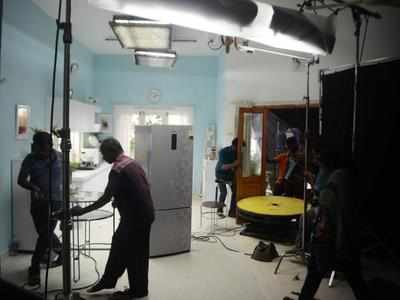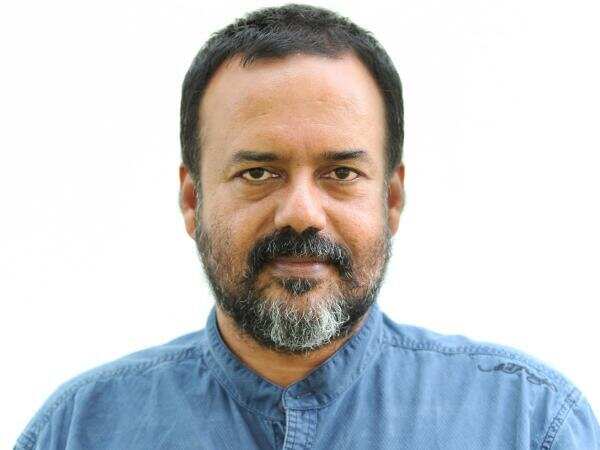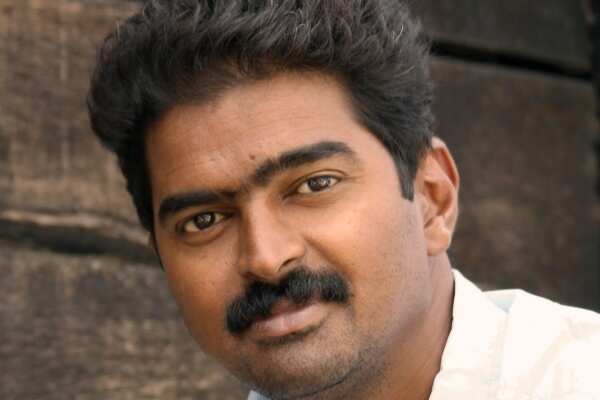- News
- entertainment
- tamil
- movies
- Spotlight: Set, props, action!
Trending
This story is from August 11, 2016
Spotlight: Set, props, action!
We list down athletes who have injured themselves at Rio Olympics 2016...

Imagine you watch a film where they show a room in a ladies��� hostel. There are three beds and tables. One bed is neatly done up, and the items on the table beside it are arranged tidily ��� a photo of the girl with her parents, pictures of a God, a laptop, books, miniature plants, a fish tank... The next bed is totally messy, and the things on the table are in disarray ��� a couple of churidar duppatas bundled together, books strewn all over the tape, a pizza box with an uneaten slice, an unwashed coffee mug...The wall behind the third bed has posters of rock and hip-hop artistes, a guitar lies on the bed, and on the table, you find a top-of-the-range laptop, lots of gadgets, English novels, DVDs of Hollywood films���
���This set-up will instantly convey the character of the individuals in the room. The first girl, you will realise is a disciplined one (and the heroine of the film, as we generally prefer our heroines to be that way), the second one a lazy one (the comedienne), and the third one a funky girl (the ultra-modern girl). You don���t need dialogues to tell what the characters of each one. These props, themselves, will tell you all you need to know about them. And this is where an art director comes in. Many people seem to consider that putting up grand sets is art direction. But that alone is not what the job involves,��� says DRK Kiran, the art director of films like Ko, Anegan, Irandaam Ulagam.

Kiran, who is also an actor, provides an analogy to simplify what the work of an art director involves. ���If you are building a house, you have an architect who designs the house, an engineer who supervisors the construction job being performed by the masons, and an interior designer who decorates the house. An art director is the architect, engineer and interior designer combined,��� he says.
While Hollywood and Bollywood films employ various specialists in the art department ��� a production designer, art director, prop master, prop stylist and prop runners, in Kollywood, the art director takes on all these responsibilities.
The production designer designs the whole look (the colour and mood) of the film, and the art director and the prop specialists ��� who work under him ��� implement his ideas. The reason why we do not have separate specialists is mainly budgetary, says art director Rajeevan, who has now been doing production design for the past three years. He is the production designer of the upcoming Kashmora, for which, the art direction is done by Jeyachandran, who has worked in films like Azhagarsamiyin Kuthirai. ���People don���t want to pay for an extra person, and so make one person do everything. While this helps an art director to be informed about everything, specialisation will bring in variety to our films. For example, while Mumbai has 15-16 prop houses that keep changing their inventory, in Chennai, we have mainly five prop houses, of which only two or three are decent. So, we art directors, end up using the same props and try to differentiate them by how we use them on the set,��� explains Rajeevan.

Giving Physical form to director���s vision
An art director has to understand the vision of a director and should work in the same wavelength as the cinematographer to bring that vision alive on screen, says Selvakumar, who has art directed films like Madrassapattinam, Purampokku Engira Podhuvudamai and Thani Oruvan. ���Sometimes, a director might not have the complete image of what they want in a particular scene and the art director has to do that for him with his illustrations,��� he adds.
���The art director���s work begins as soon as the script is complete, and he figures among the technicians that a director takes along with him on a recce to scout locations for the film���s shoot. During the pre-production stage, they are involved in the construction of sets that the film needs, coming up with scale drawings of the set, coordinating the source materials, and set marking (defining the dimensions that a set will occupy on ground),��� says Selvakumar.

���But we don���t do the physical tasks involved in erecting a set. We guide the execution of it,��� pitches in Kiran, ���The materials that are requires like wood, aluminium pipes, paint and so on are readily available, and I just have to figure how much I would need for the set. It is only when filling the set with properties that I have to work by myself. I will have to go and scout for properties that the set would need, bring them to the set, and arrange them in the way the scene demands. From the cute teddy bear you might find in the heroine���s room to the guns and knives that the hero uses, the art director is in-charge of every prop the film needs.���
Budgets and compromises
Budgeting for the art department depends on the requirements of a film and varies from film to film, say art directors. ���The first half of Kashmora, for example, is a normal story set in the present day, and the art direction budget for it is only 10% of what we have spent on the second half, which has a period portion,��� reveals Rajeevan. ���With most of the studios shutting down, the scale of our films has come down, and we are constantly trying to strike a compromise between working with a limited budget and satisfying the needs of the film. If you ask me for a figure, I would say that today, for a film that has a budget of Rs 10 crore, 5% gets allocated for the art department,��� says Selvakumar.
The advancement in visual effects has also affected the work of art directors, but in a good way. ���VFX has replaced 20% of the work of an art director, but that is actually a very positive thing,��� says Rajeevan, ���When the art director and the VFX supervisor work hand-in-hand, computer graphics is a boon to art directors and helps us in our job.���
Handling the craftsmen
The art department is one that works under a lot of constraints. From wrangling with producers over the budget, to the push and pull between the director and the cinematographer, they are involved in a constant tug of war, while they do their work. But the most important challenge for them is actually handling the craftsmen ��� carpenters, electricians, painters, mould makers ��� who they work with to build the sets. The number of craftsmen has come down. There are around 600-700 craftsmen who regularly work in films, and when a couple of films that require extensive sets are on floors, most of the talent goes to work on those. Also, the art director is the one who gets the blame when any mishap occurs on the set.
Earlier, craftsmen used to work continuously for a couple of days on the set, taking just a couple of hours��� break. But with increased wages and union stricter rules (the craftsmen have their own unions, which are all affiliated to FEFSI), the workers are able to exert some control over things. And industry insiders cite another incident which has made things difficult. Around five-six years ago, following reports that a worker in the film industry was involved in an oil-pulling scheme which was busted by the police, they allege that cops have become suspicious about film industry workers, and those who try to return home late after work (after 2am) run into trouble with the cops. So, many do not want to work late into the night. And if art directors decide to get them to work extra hours, they will need to pay double the amount.
Subtlety goes unnoticed
But despite such issues, art directors say that the work goes on, all in service of the film. Kiran, who initially wanted to become a director, says, ���Art direction has its own charm. It is possible to tell a story using the props on a 10x10 wall. The same location can be shown as an office or a house or a police station by an art director. In Naanum Rowdy Dhaan, I turned the same building which was shown as Nayanthara���s childhood home into Parthiban���s den in the climax, but no one could make that out. Almost every art director does subtle things like this, but people do not realise the work that has gone behind that as it is invisible. That is why even in award shows, they award art directors who have put up huge sets. Today, huge sets are built only for films of bigger stars or directors, so essentially only five to eight films need such sets in a year. If at least these people can learn to appreciate and recognise such subtle efforts, it would give a boost to art directors working on small films.���
���This set-up will instantly convey the character of the individuals in the room. The first girl, you will realise is a disciplined one (and the heroine of the film, as we generally prefer our heroines to be that way), the second one a lazy one (the comedienne), and the third one a funky girl (the ultra-modern girl). You don���t need dialogues to tell what the characters of each one. These props, themselves, will tell you all you need to know about them. And this is where an art director comes in. Many people seem to consider that putting up grand sets is art direction. But that alone is not what the job involves,��� says DRK Kiran, the art director of films like Ko, Anegan, Irandaam Ulagam.

Kiran, who is also an actor, provides an analogy to simplify what the work of an art director involves. ���If you are building a house, you have an architect who designs the house, an engineer who supervisors the construction job being performed by the masons, and an interior designer who decorates the house. An art director is the architect, engineer and interior designer combined,��� he says.
Production designer vs art director
While Hollywood and Bollywood films employ various specialists in the art department ��� a production designer, art director, prop master, prop stylist and prop runners, in Kollywood, the art director takes on all these responsibilities.
The production designer designs the whole look (the colour and mood) of the film, and the art director and the prop specialists ��� who work under him ��� implement his ideas. The reason why we do not have separate specialists is mainly budgetary, says art director Rajeevan, who has now been doing production design for the past three years. He is the production designer of the upcoming Kashmora, for which, the art direction is done by Jeyachandran, who has worked in films like Azhagarsamiyin Kuthirai. ���People don���t want to pay for an extra person, and so make one person do everything. While this helps an art director to be informed about everything, specialisation will bring in variety to our films. For example, while Mumbai has 15-16 prop houses that keep changing their inventory, in Chennai, we have mainly five prop houses, of which only two or three are decent. So, we art directors, end up using the same props and try to differentiate them by how we use them on the set,��� explains Rajeevan.

Giving Physical form to director���s vision
An art director has to understand the vision of a director and should work in the same wavelength as the cinematographer to bring that vision alive on screen, says Selvakumar, who has art directed films like Madrassapattinam, Purampokku Engira Podhuvudamai and Thani Oruvan. ���Sometimes, a director might not have the complete image of what they want in a particular scene and the art director has to do that for him with his illustrations,��� he adds.
���The art director���s work begins as soon as the script is complete, and he figures among the technicians that a director takes along with him on a recce to scout locations for the film���s shoot. During the pre-production stage, they are involved in the construction of sets that the film needs, coming up with scale drawings of the set, coordinating the source materials, and set marking (defining the dimensions that a set will occupy on ground),��� says Selvakumar.

���But we don���t do the physical tasks involved in erecting a set. We guide the execution of it,��� pitches in Kiran, ���The materials that are requires like wood, aluminium pipes, paint and so on are readily available, and I just have to figure how much I would need for the set. It is only when filling the set with properties that I have to work by myself. I will have to go and scout for properties that the set would need, bring them to the set, and arrange them in the way the scene demands. From the cute teddy bear you might find in the heroine���s room to the guns and knives that the hero uses, the art director is in-charge of every prop the film needs.���
Budgets and compromises
Budgeting for the art department depends on the requirements of a film and varies from film to film, say art directors. ���The first half of Kashmora, for example, is a normal story set in the present day, and the art direction budget for it is only 10% of what we have spent on the second half, which has a period portion,��� reveals Rajeevan. ���With most of the studios shutting down, the scale of our films has come down, and we are constantly trying to strike a compromise between working with a limited budget and satisfying the needs of the film. If you ask me for a figure, I would say that today, for a film that has a budget of Rs 10 crore, 5% gets allocated for the art department,��� says Selvakumar.
The advancement in visual effects has also affected the work of art directors, but in a good way. ���VFX has replaced 20% of the work of an art director, but that is actually a very positive thing,��� says Rajeevan, ���When the art director and the VFX supervisor work hand-in-hand, computer graphics is a boon to art directors and helps us in our job.���
Handling the craftsmen
The art department is one that works under a lot of constraints. From wrangling with producers over the budget, to the push and pull between the director and the cinematographer, they are involved in a constant tug of war, while they do their work. But the most important challenge for them is actually handling the craftsmen ��� carpenters, electricians, painters, mould makers ��� who they work with to build the sets. The number of craftsmen has come down. There are around 600-700 craftsmen who regularly work in films, and when a couple of films that require extensive sets are on floors, most of the talent goes to work on those. Also, the art director is the one who gets the blame when any mishap occurs on the set.
Earlier, craftsmen used to work continuously for a couple of days on the set, taking just a couple of hours��� break. But with increased wages and union stricter rules (the craftsmen have their own unions, which are all affiliated to FEFSI), the workers are able to exert some control over things. And industry insiders cite another incident which has made things difficult. Around five-six years ago, following reports that a worker in the film industry was involved in an oil-pulling scheme which was busted by the police, they allege that cops have become suspicious about film industry workers, and those who try to return home late after work (after 2am) run into trouble with the cops. So, many do not want to work late into the night. And if art directors decide to get them to work extra hours, they will need to pay double the amount.
Subtlety goes unnoticed
But despite such issues, art directors say that the work goes on, all in service of the film. Kiran, who initially wanted to become a director, says, ���Art direction has its own charm. It is possible to tell a story using the props on a 10x10 wall. The same location can be shown as an office or a house or a police station by an art director. In Naanum Rowdy Dhaan, I turned the same building which was shown as Nayanthara���s childhood home into Parthiban���s den in the climax, but no one could make that out. Almost every art director does subtle things like this, but people do not realise the work that has gone behind that as it is invisible. That is why even in award shows, they award art directors who have put up huge sets. Today, huge sets are built only for films of bigger stars or directors, so essentially only five to eight films need such sets in a year. If at least these people can learn to appreciate and recognise such subtle efforts, it would give a boost to art directors working on small films.���
End of Article
FOLLOW US ON SOCIAL MEDIA








